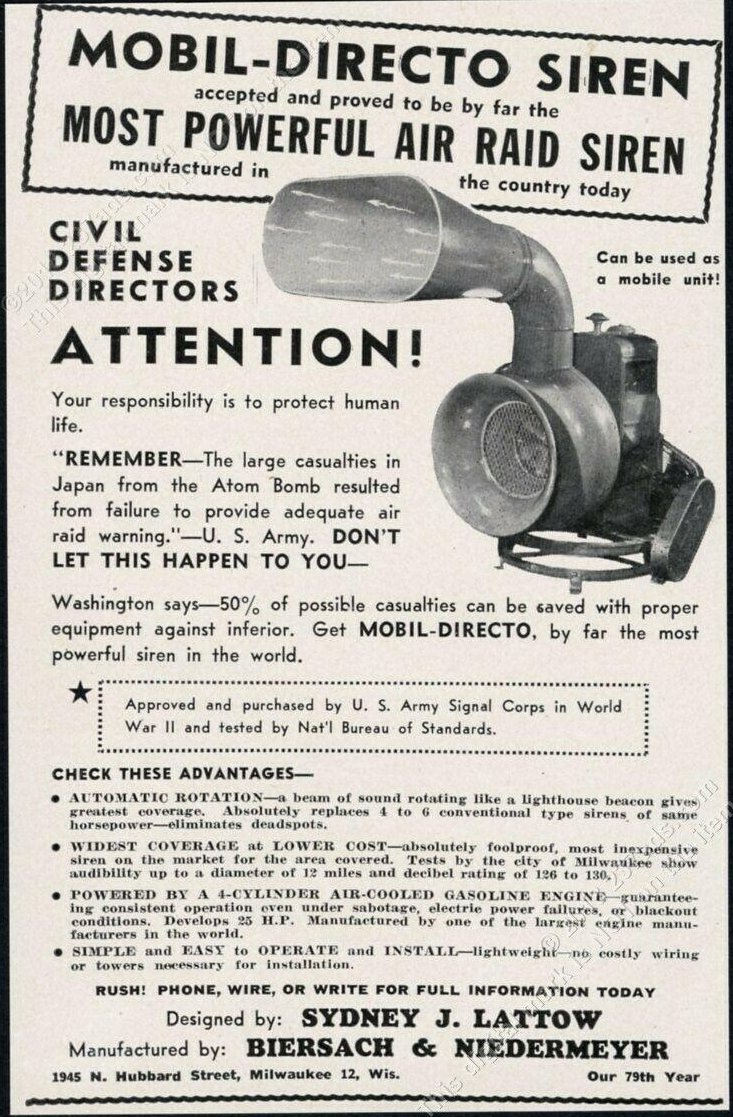This ad dates to the early-mid 1980s. The siren advertised is the Penetrator-10 (P-10 for short) which is a 10-horsepower electric outdoor warning siren built by Alerting Communicators of America (ACA). ACA was the siren division of Biersach & Niedermeyer (BNCO), a company previously shown in the Mobil Directo ads. The P-10 boasted a rating of 125 decibels at 100 ft, with a double-sided 10 horsepower motor driving both the chopper (which makes the noise) and the chain-drive rotation mechanism underneath the siren using a gearbox. The siren used weather-resistant fibreglass for the projector and motor housing, which was something ACA was famous for as other companies used steel. It could also be single or dual-tone depending on what was needed.
The P-10 was released in 1980, replacing the Allertor 125 which was the same siren at its core, but used a similar projector to the Mobil Directo. This projector was found to suffer from water building up in the horn and freezing, which would jam up the chopper and burn out the motor. The P-10 didn't have this issue, which is why it replaced the Allertor. The P-10 was also sold alongside the 15HP Penetrator-15, and the monstrous 135 decibel Penetrator-50, which holds the record as the loudest electric siren ever built.
After ACA's bankruptcy and reformation into the American Signal Corporation in 1994, the P-10 was discontinued in favour of the P-15, which would be renamed to the RM-127 until it too was discontinued in 2002. The P-50 would be sold until 2007 under the name T-135AC. American Signal Corporation still exists today, selling the Tempest, E-Class, and i-Force lines of sirens.








A Better Place, a Better Time in my Ass
By Streetlight Manifassto